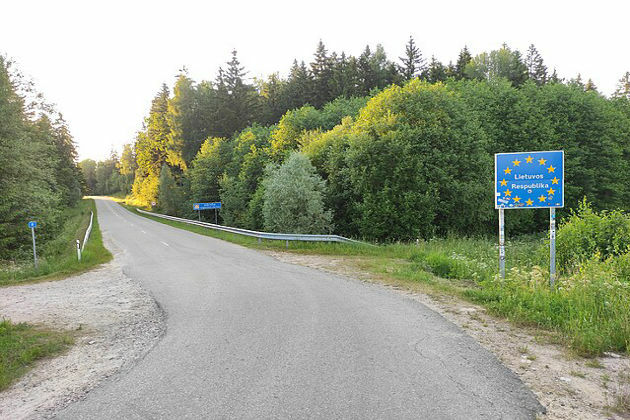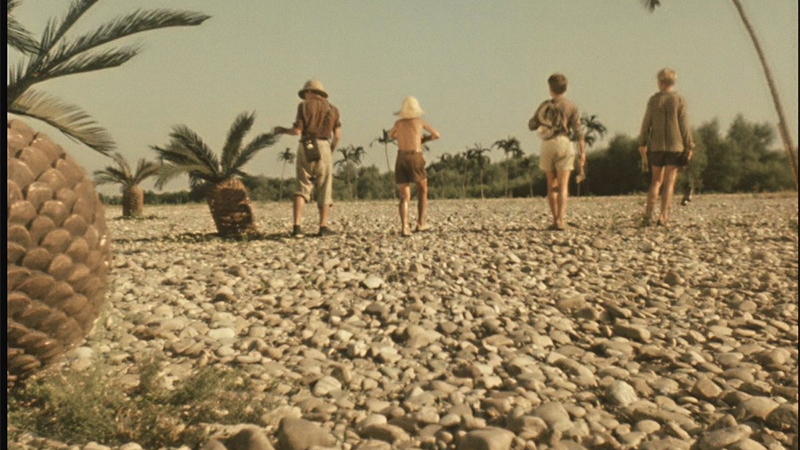Vincent van Gogh and the Colors he used: Color Symbolism
7Newswire
19 Jan 2023, 16:11 GMT+10

Vincent van Gogh's career as an artist was concise. It lasted only for ten years, from 1880 to 1890, but he created hundreds of works during this time.
Generally, art lovers know that Vincent van Gogh used color in ways that were not custom at that stage. They know he used color in all the Vincent van Gogh drawings and paintings to "tell a story." But few art lovers really appreciate what a genius Vincent van Gogh was to use color in the ways he did.
In this article, we'll give you more detail regarding Van Gogh's usage of color and how Vincent van Gogh's drawings describe emotions. We'll then discuss how art scholars later "discovered" how he used color instinctively, as only an art genius could do.
The Colors in Van Gogh's Paintings are not natural and are "unusual" for that Time
Art historians accept that Vincent van Gogh was continuously experimenting to find colors to convey the emotion he felt and the mood he wanted to capture in his paintings. This is true for all the works on the famous Van Gogh paintings list.
Thus, when looking at Van Gogh's paintings, remember that the colors used are not realistic and natural. Because Van Gogh wanted to convey specific emotions with his colors, you'll find "unusual" colors for that Time in his paintings. The "unusual" colors include yellow ocher, chrome yellow, vermilion, ultramarine (a deep blue color), lead white, and black.
Van Gogh Used Color Instinctively
It is believed that Van Gogh didn't "calculate" scientifically what to mix to get to the colors he needed or "designed" the most effective way to apply the paint on the canvas. Instead, he instinctively and inspired experimented on the canvas until satisfied.
Nowadays, art scholars and color experts can scientifically explain why and how Vincent van Gogh mixed and applied different "unusual "colors on his canvases, but you have to remember that Vincent van Gogh did it instinctively.
For Van Gogh, Color had Symbolic Value
Apart from Van Gogh's experiments with colors, he also used color symbolically. He said, for instance, that he used yellow as the symbol of the sun. That was why he used yellow in the "Sunflower" paintings. He also painted the sunflowers with almost no shadows or complementary colors. According to Van Gogh, yellow conveyed life, energy, happiness, and hope.
With his "Sunflower" series, he experimented with the shades and tints of yellow. Interestingly, it has recently been scientifically proven that the sunflower has a psychological effect and that this is one of the reasons why Van Gogh's "Sunflower" paintings seem timeless.
The "Color-development" in Van Gogh's Paintings
When Vincent van Gogh's painting career started, he usually used dark colors like most other Dutch painters of the Time. But he was never satisfied with using only "traditional" and dark colors, and although he initially painted mainly in dark colors, he started experimenting with other colors. He also read many books on color theory. And complementary colors fascinated him.
He discovered that yellow and purple, blue and orange, and red and green complemented each other, and in his later works, he started to use bright colors, including yellow, orange-red, blue, and green.
If you look at the most famous Vincent van Gogh artwork, you will see that apart from his experimentation with "lighter" colors like yellow, he still used dark colors when depressed. A good example is his painting "Shoes," In the painting, he used a lot of brown and khaki colors because he wanted to show the viewer the hard life and humility of the shoe owner.
Interestingly, a famous theory behind Van Gogh's color choices shifts to lighter, yellowish colors is that he might have suffered from xanthopsia, or "yellow vision." This is a color vision deficiency with a predominance of yellow in the vision.
Interesting Facts and Quotes about Van Gogh's use of Color
When you study Van Gogh's artwork, you find that chrome, yellow, and orange were his most common types and shades of color. His favorite was the yellow lead chromate.
He also loved to use yellow in context with its complementary color, blue. Van Gogh saw the power and the entirety of life in both colors. An outstanding example is his 1890 work "Wheat fields with crows."
Van Gogh said at a stage that there is no blue without yellow and orange. He thought of black and white also as colors. He said their simultaneous contrast is as striking as green and red. He often said that the night is more alive and richly colored than the day.
Mathematical Analyses of Van Gogh's Use of Color
When you read this section regarding the color theory and the analyses of Van Gogh's "Sunflowers" and other paintings, you have to keep in mind that Van Gogh didn't use the theory to "design" his paintings - art scholars only later "discovered" that Van Gogh's works fit into this framework. Thus, his painting "Sunflowers," for instance, was not planned according to a study. Instead, it was created instinctively by an artistic genius.
With color theory, there are mathematical relationships between colors, and colors can be broken down into three components, namely hue (the choice of color), saturation (the intensity of the color), and value (the color's lightness or darkness).
The color theory defines three primary colors - red, green, and blue. Primary colors cannot be created by mixing two other colors. Secondary colors (magenta, yellow, and cyan) are created when primary colors are mixed. These consist of magenta, yellow, and cyan. Tertiary colors are formed when you mix a primary and a secondary color. As an example, red and yellow will create orange.
The artist can create different effects and emotions when the colors on the color wheel are used "scientifically." However, as mentioned above, Van Gogh instinctively used colors and color combinations.
Conclusion
The genius artist Vincent van Gogh instinctively used color to convey emotion and movement. Art and color science scholars "discovered" later that there are mathematical and other scientific reasons why his color combinations worked so successfully for all the works on the Van Gogh paintings list. Share
Share
 Tweet
Tweet
 Share
Share
 Flip
Flip
 Email
Email
Watch latest videos
Subscribe and Follow
Get a daily dose of Illinois Intelligencer news through our daily email, its complimentary and keeps you fully up to date with world and business news as well.
News RELEASES
Publish news of your business, community or sports group, personnel appointments, major event and more by submitting a news release to Illinois Intelligencer.
More InformationNorth America
SectionFedEx, UPS step up as Canada Post loses market share in strikes
OTTAWA, Canada: With Canada Post struggling to maintain operations amid labour unrest, rivals like FedEx and UPS are stepping in to...
Tariff talks between Bangladesh and US end without conclusion
Dhaka [Bangladesh], July 12 (ANI): The three-day second-round tariff talks between Bangladesh and the United States have ended without...
Paul McCartney announces fall 'Got Back' North American Tour; check out dates
Washington, DC [US], July 12 (ANI): The Beatles legend Paul McCartney is hitting the road again. The singer-songwriter has announced...
One pilot asked the other about fuel cutoff seconds before crash, says preliminary AI171 crash report
New Delhi [India], July 12 (ANI): A preliminary investigation into the Air India flight AI171 crash has revealed that just seconds...
"Our govt working towards "TelanganaRising" vision": CM Revanth Reddy
Hyderabad (Telangana) [India], July 12 (ANI): Telangana Chief Minister Revanth Reddy has said that the spirit of Telangana is similar...
Zelensky confirms resumption of US military aid
The Pentagon abruptly suspended the shipments in early July, citing a need to audit remaining stockpiles Ukrainian President Vladimir...
International
SectionCDC: US records 1,288 measles cases, most since 1992 outbreak
ATLANTA, Georgia: The United States is facing its worst measles outbreak in more than three decades, with 1,288 confirmed cases so...
Gaza War sucking life out of an Israeli generation
In the past month alone, 23 Israeli soldiers have been killed in Gaza—three more than the number of remaining living hostages held...
Faulty IT system at heart of UK Post Office scandal, says report
LONDON, U.K.: At least 13 people are believed to have taken their own lives as a result of the U.K.'s Post Office scandal, in which...
Travelers can now keep shoes on at TSA checkpoints
WASHINGTON, D.C.: Travelers at U.S. airports will no longer need to remove their shoes during security screenings, Department of Homeland...
Rubio impersonator used AI to reach officials via Signal: cable
WASHINGTON, D.C.: An elaborate impersonation scheme involving artificial intelligence targeted senior U.S. and foreign officials in...
Warsaw responds to migration pressure with new border controls
SLUBICE, Poland: Poland reinstated border controls with Germany and Lithuania on July 7, following Germany's earlier reintroduction...













